
Be a Land Steward.
Sign up for Greenhouse Gases -
a weekly-ish newsletter that will teach you the science behind regenerative gardening, with action steps to help you make a difference in your backyard.

Sign up for Greenhouse Gases -
a weekly-ish newsletter that will teach you the science behind regenerative gardening, with action steps to help you make a difference in your backyard.

However, it's important to know that cover crops aren't just for farmers! Continue on to learn why Lacy Phacelia, AKA Bee's Friend, is the best summer green manure choice for home gardens like yours.
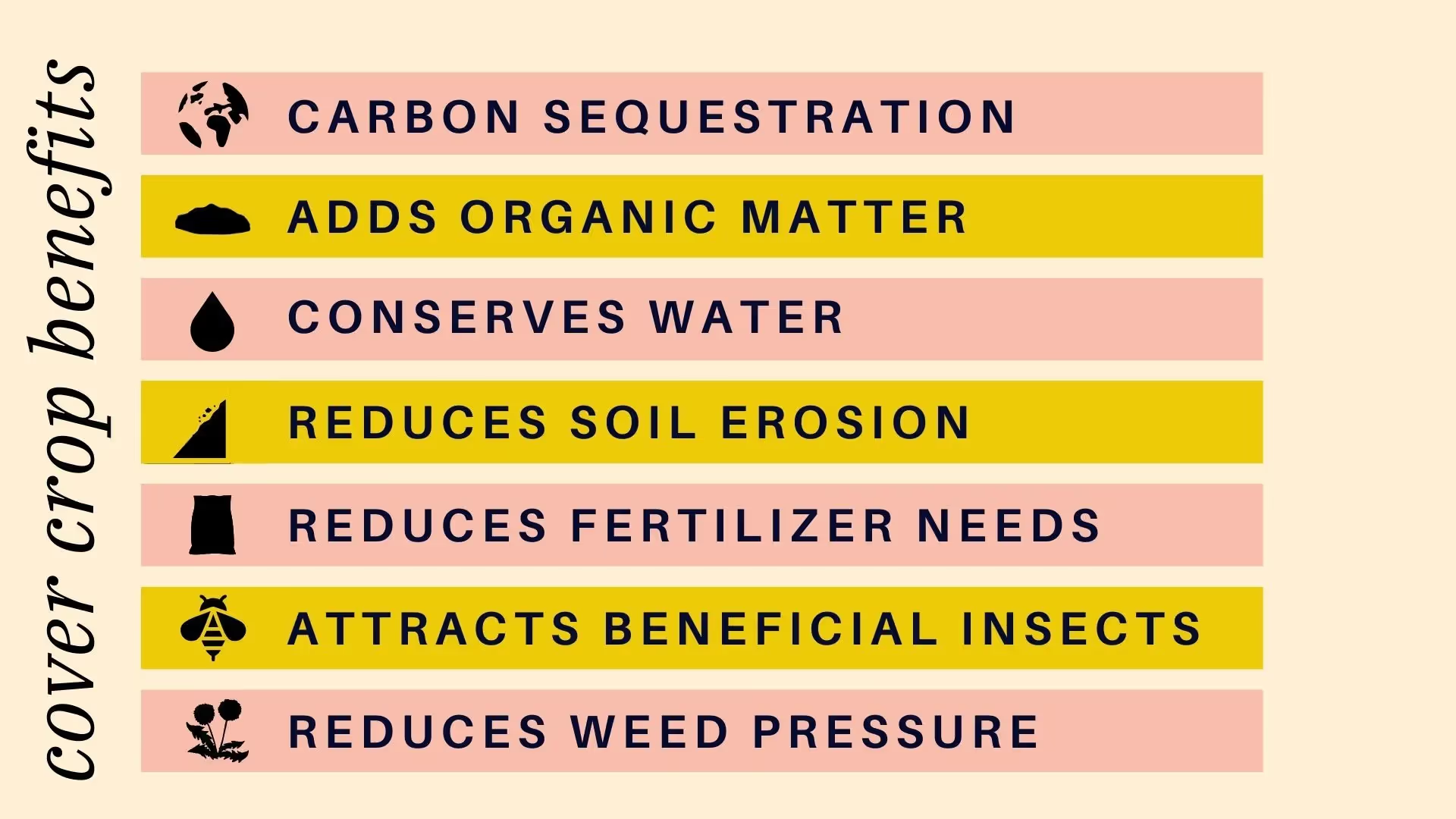
Before I share the benefits of this plant, it’s important to understand the benefits of cover crops:
- planted on large regenerative farms, but they can offer the same benefits to your garden.
- satisfy the two main goals of regenerative practices: carbon sequestration and soil health improvement.
- grown when the land would otherwise be bare. Bare earth sheds carbon and is more likely to suffer from erosion and nutrient loss.
- ensure that carbon sequestration continues throughout the year.
Green manures in general offer the following additional benefits to your garden:
To kill back the cover crop, crimp it so that it breaks at the stem and then the residue remains on the ground. The residue acts as a mulch for the next crop
You can also terminate a cover crop with a fence post like this. Alternatively, trim it back to the ground with some clippers or scissors.
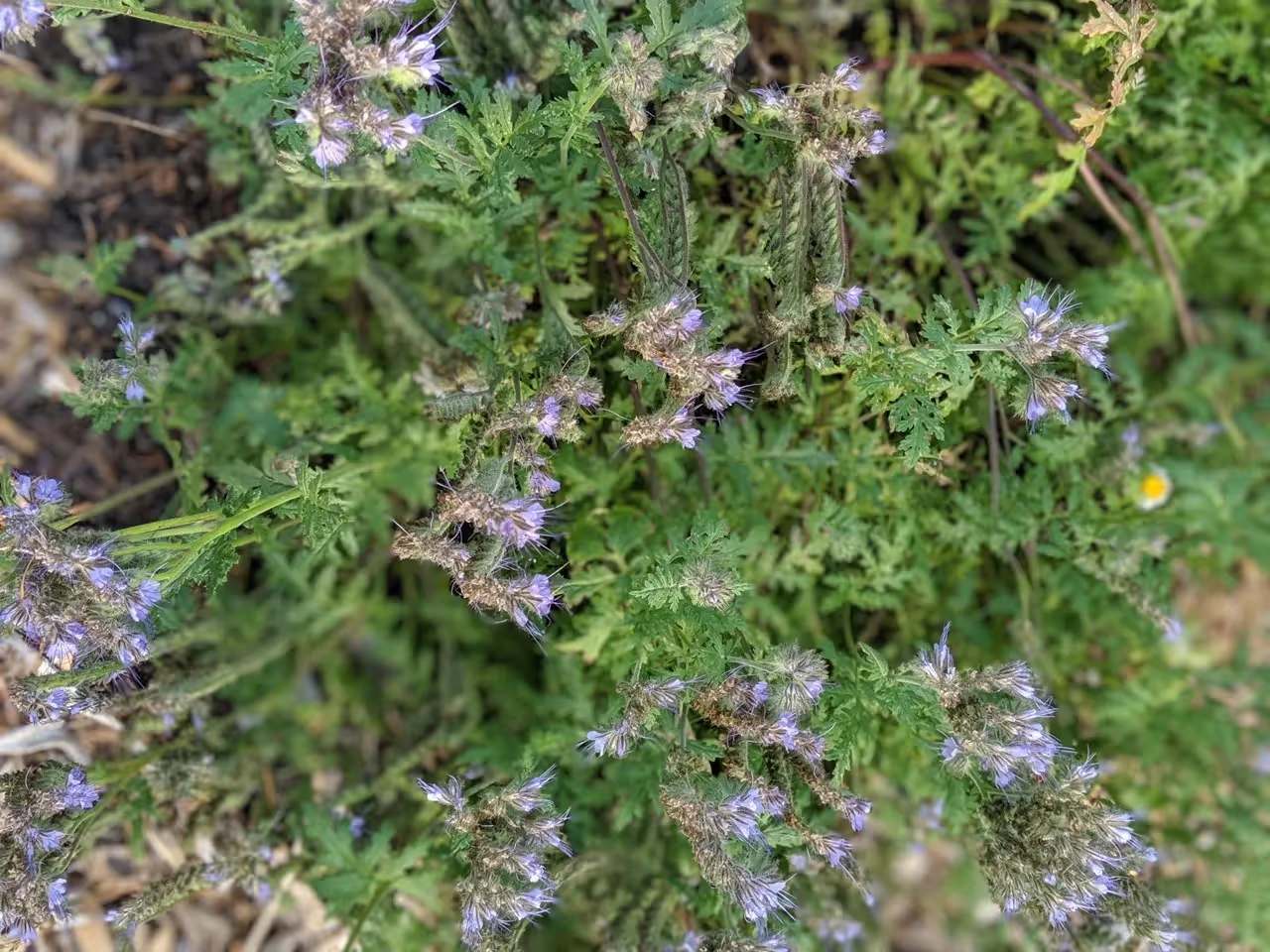

Bee's Friend is an annual plant that prefers to germinate in above-freezing temperatures. The Small Farm Success Project share that it will have higher rates if the temperature is under 70 degrees F.
However, if you are in a warmer region and want phacelia to grow in the winter, in my zone 7 garden I’ve had seeds germinate in the heat of late August that are still growing as I write this in January.
As a native plant to arid southwestern regions, it doesn’t germinate well if the soil is over-saturated with water.
1. Prepare the Land:
Clear the area of weeds and debris to provide a suitable environment for planting.
2a. Sow in a Pollinator Patch:
2b. Sow as a Gree Manure:
3. Post-Sowing Care:
Usually the flowers come on and remain between late April-September in the Northern Hemisphere (USDA NRCS).

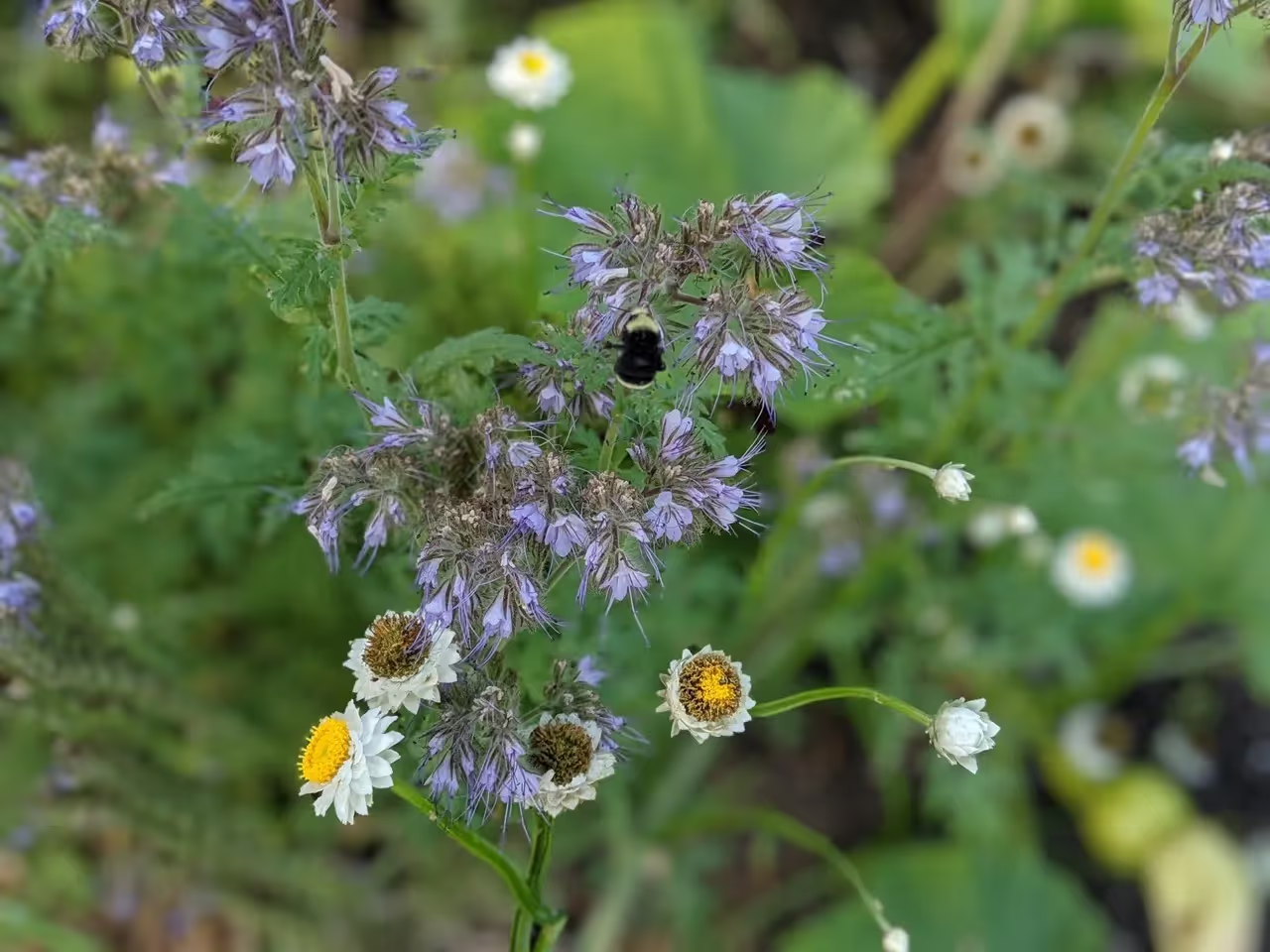
→ Bonus: This plant is rare in that it produces nectar 24 hours a day, according to Hudson Valley Seed.
With a name like Bee’s Friend, it should come as no surprise that it is in the Boraginaceae family - named after the bee-favorite borage.
In fact, phacelia is rich in both nectar and pollen. It’s considered a top spring food source for honeybees, and it quickly replenishes its nectar in a way that is similar to borage.
That's why it's often called "bee's friend" - and not just honeybees. It provides a reliable food source for specialist and native bees, too.
In an experiment conducted by Siskiyou Seeds and BeeGirl in southern Oregon, it was the first plant to bloom and provided a valuable food source for bumblebees and sweat bees early in the season.
Phacelia offers nectar to butterflies, too! You might find dusky-wings, or even adult Monarchs feeding on this flower.
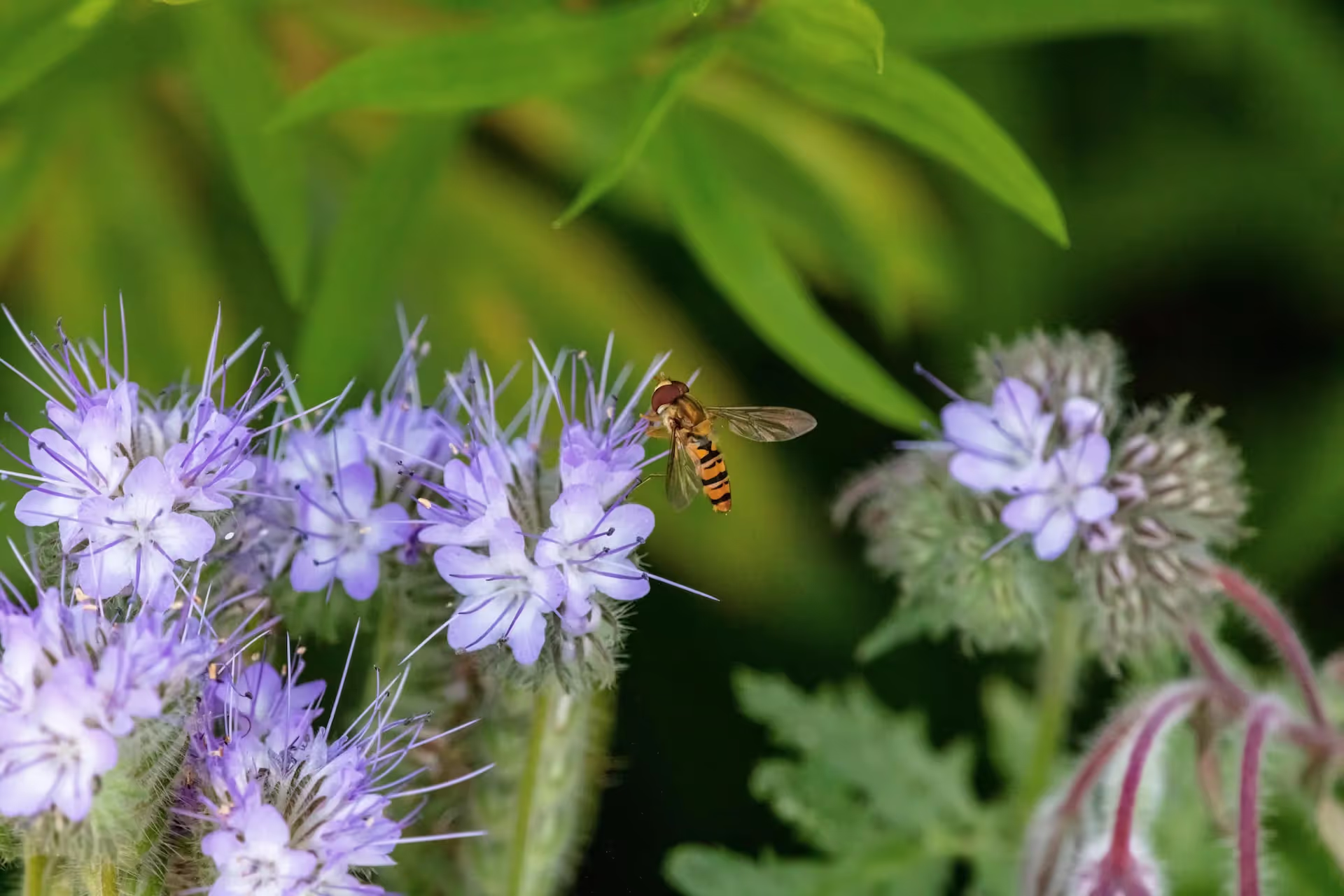
According to Calscape, phacelia also draws in hoverflies. These beneficial insects help reduce aphid populations.
A resource from the University of Connecticut lists tachinid flies as another beneficial attracted to phacelia. These helpful insects feed on caterpillar pests like cabbage worm, cabbage looper, and cutworms. They also parasitize squash bugs. A great beneficial to have around vegetables like brassicas and winter squash for organic pest management!
Uprising Organics recommends companion planting phacelia with brassicas to control aphid populations.
An issue that can come up with cover crops during the summertime is that they take a lot of water resources to maintain.
Phacelia solves that problem, as it is extremely drought-resistant. Calscape recommends watering this plant just once a month once it is established!
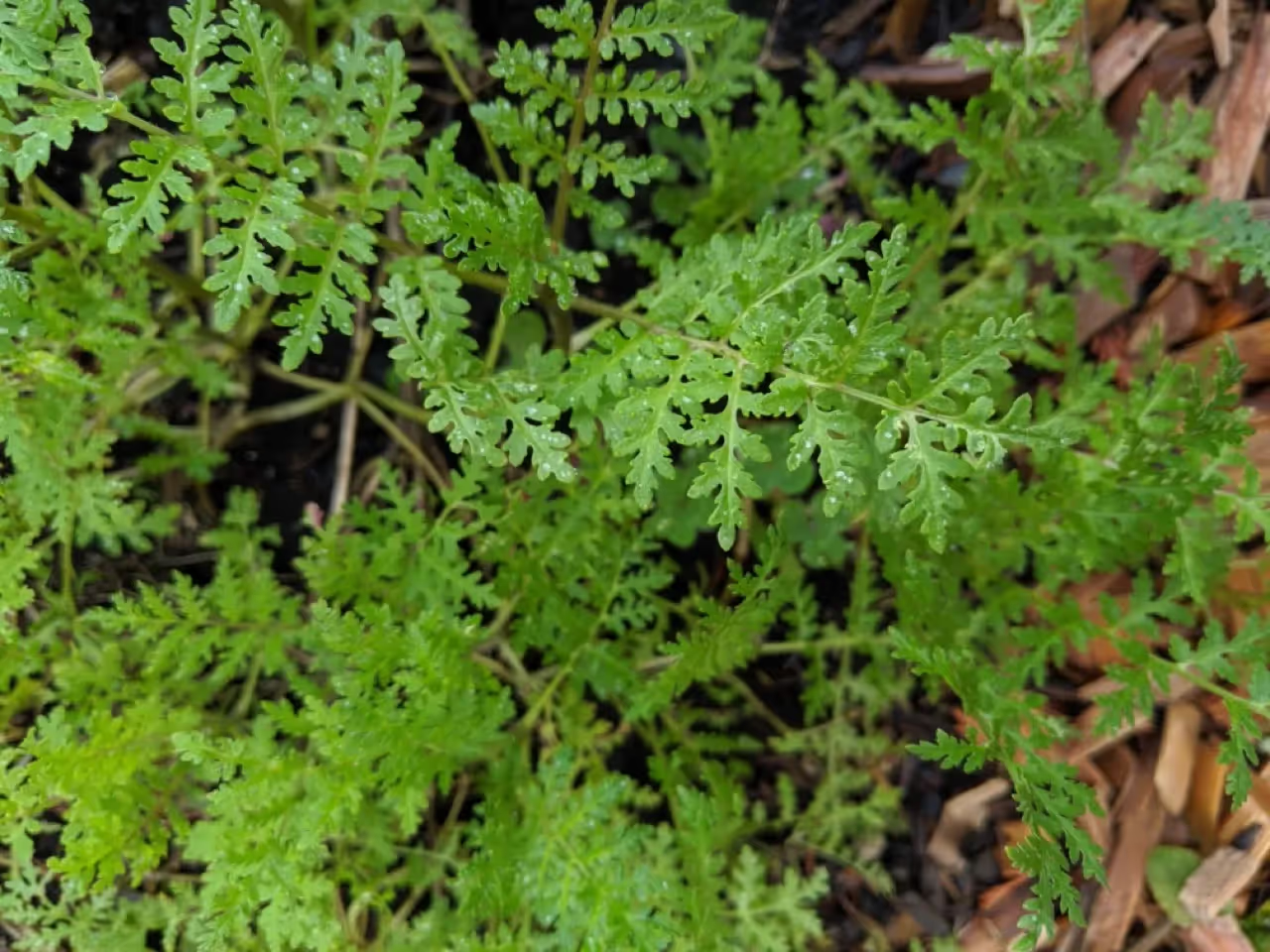
Phacelia has the ability to create a carpet of leaves with its fast growing habit. This helps to shade out weeds that would otherwise dominate bare garden rows.
In warmer climates, Bee's Friend can provide this benefit year-round, even in the winter.
Unlike other more persistent cover crops (or weeds, for that matter), it can be terminated easily by mowing it or cutting it back.
In zones where winter temperatures regularly drop below 20 degrees, phacelia will naturally winter-kill.
I’ve seen in my garden how a single self-sown phacelia plant can produce a massive amount of green material.
If you want something for chop-and-drop purposes, or to beef up the greens in your compost pile, phacelia is an excellent choice. In fact, its biomass amounts are comparable to that of cereal rye.
Regenerative gardeners recognize that soil health is the key to carbon sequestration and fantastic crops.
Phacelia helps us to achieve those goals in a few ways. It:
The beauty and utility of Phacelia are second to none. This plant plays a pivotal role in maintaining a vibrant ecosystem.
A powerhouse for pollinators, a champion of land stewardship, and a savvy gardener's ally against weeds. All while looking gorgeous and attracting insect friends into your backyard.
Phacelia’s versatility and environmental friendliness make it a top contender for any garden seeking to flourish sustainably.